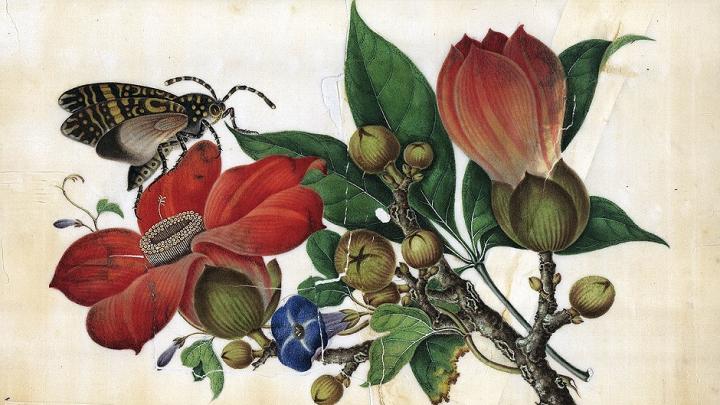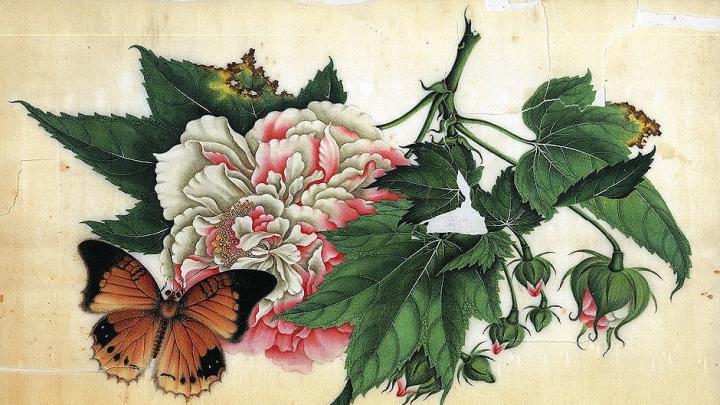Painters in southern China in the nineteenth century created the images of their flora and fauna shown above probably as trinkets for the tourist trade. These are among 29 botanical paintings in two bound volumes acquired around 1912 by Charles Sprague Sargent, the first director of Harvard’s Arnold Arboretum. Starting about 1825, Westerners in China snatched up such artworks, depicting local customs, costumes, birds, bees, and flowers. They were pretty souvenirs as a rule (although the National Anthropological Archives has a group devoted to Chinese torture). Tourists called them rice-paper paintings from the mistaken notion that their distinctive paper was made of rice.
The elegant paper in fact came from the pith of the Tetrapanax papyriferum plant, a member of the ginseng family. Native to the swampy forests of Taiwan and southern China, it could grow in subtropical regions such as the Texas coast, should readers there wish to make pith paper. It is a shrub or small tree, usually 4 to 12 feet tall but capable of reaching 30 feet, and its wood is hard and dense. But a worker with rare skill and a big knife can slice its pith, as demonstrated at right in Hooker’s Journal of Botany and Kew Garden Miscellany (1850), into a sheet of smooth, bone-white paper. The paper has great strength in its youth, and when damp may be stretched and folded into almost any shape, which is why Chinese for centuries have used pith paper to make artificial flowers and decorative hairpins. It absorbs watercolors or tempera readily, creating a relief texture with a velvety visual depth.
The first mention of pith paper comes from the Tsin Dynasty (a.d. 265-420), when the emperor ordered servants to arrange flowers made of it. But the identity of the plant from which the pith came baffled Western botanists until a live specimen finally arrived at the Royal Botanic Gardens, Kew, outside London, in 1852. Attempts to import one had come to grief repeatedly because plants died aboard imperial junks, because brown ants ate them, because they had to be thrown overboard when pirates approached, or because, as one participant reported, when men go into the forests to procure the plants, “the aborigines come suddenly upon them and take away their lives.”
The 29 paintings, a photograph of the elusive pith plant, and more about the mysteries of “rice paper” may be found in an online exhibition, arranged by Lisa DeCesare, head of archives and public services at the Botany Libraries, at www.huh.harvard.edu/libraries/Tetrap_exhibit/ChineseBotanicals.html.










